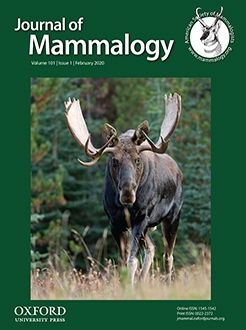The North American badger (Taxidea taxus) is a nonhibernating carnivore that occurs in areas with highly seasonal climates, such as in Canada where the animal reaches its northern limits. There, winter climate is harsh and conventional habitat is limited and patchy, possibly leading to additional energetic constraints. Using radiotelemetry and remote cameras, we documented winter activities of 16 badgers (12 females, 4 males) between 2007 and 2011 in British Columbia, at the northwestern periphery of the species' range. In comparison to their summer ecology, the animals reduced home range sizes by up to 98% and showed fidelity to particular burrows. Burrow fidelity was variable (mean 27 days; range 0–108) and coincided with reduction in body temperatures, suggesting the onset of torpor. Despite lengthy use of the same burrow, badgers emerged frequently and conducted excursions that appeared to represent foraging behavior. Burrow emergence was not related to ambient temperature or snow depth; rather, it was best explained by the amount of days elapsed since the start of winter. Despite these trends, winter activity also was variable among individual badgers. It may be that limited fat reserves and higher energetic costs in northwestern ranges require winter foraging activities.
How to translate text using browser tools
30 November 2019
Winter activity patterns of the North American badger (Taxidea taxus) at its northwestern periphery
Stephen A. Symes,
Richard Klafki,
Roger Packham,
Karl W. Larsen
ACCESS THE FULL ARTICLE

Journal of Mammalogy
Vol. 101 • No. 1
February 2020
Vol. 101 • No. 1
February 2020
activity patterns
Burrow use
Canada
emergence
home range
movement
peripheral population





